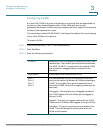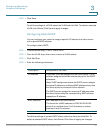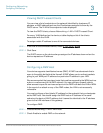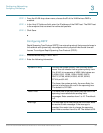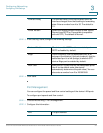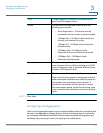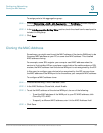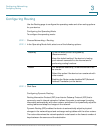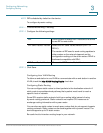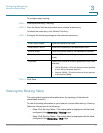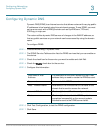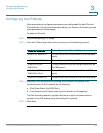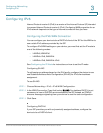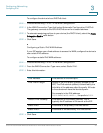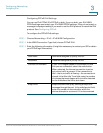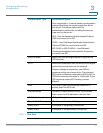
Configuring Networking
Configuring Routing
Cisco RV130/RV130W Wireless Multifunction VPN Router Administration Guide 40
3
NOTE RIP is disabled by default on the device.
To configure dynamic routing:
STEP 1 Choose Networking > Routing.
STEP 2 Configure the following settings:
STEP 3 Click Save.
Configuring Inter VLAN Routing
To allow an end station in one VLAN to communicate with an end station in another
VLAN, check the Inter VLAN Routing Enable check box.
Configuring Static Routing
You can configure static routes to direct packets to the destination network. A
static route is a predetermined pathway that a packet must travel to reach a
specific host or network.
Some ISPs require static routes to build your routing table instead of using
dynamic routing protocols. Static routes do not require CPU resources to
exchange routing information with a peer router.
You can also use static routes to reach peer routers that do not support dynamic
routing protocols. Static routes can be used together with dynamic routes. The
device supports up to 30 static routes.
Be careful not to introduce routing loops in your network.
RIP Check Enable to enable RIP. This allows the device
to use RIP to route traffic.
RIP Send Packet Version Select the RIP Send Packet Version (RIPv1 or
RIPv2).
The version of RIP used to send routing updates to
other routers on the network depends on the
configuration settings of the other routers. RIPv2 is
backward compatible with RIPv1.
RIP Recv Packet Version Choose the RIP Receive Packet Version.



